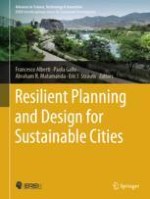2024 | OriginalPaper | Buchkapitel
The Biophilic Healing Index (BHI) as a Professional Tool for Indoors and Outdoors Active Living Design
verfasst von : Eleni Tracada
Erschienen in: Resilient Planning and Design for Sustainable Cities
Verlag: Springer Nature Switzerland
Aktivieren Sie unsere intelligente Suche, um passende Fachinhalte oder Patente zu finden.
Wählen Sie Textabschnitte aus um mit Künstlicher Intelligenz passenden Patente zu finden. powered by
Markieren Sie Textabschnitte, um KI-gestützt weitere passende Inhalte zu finden. powered by
